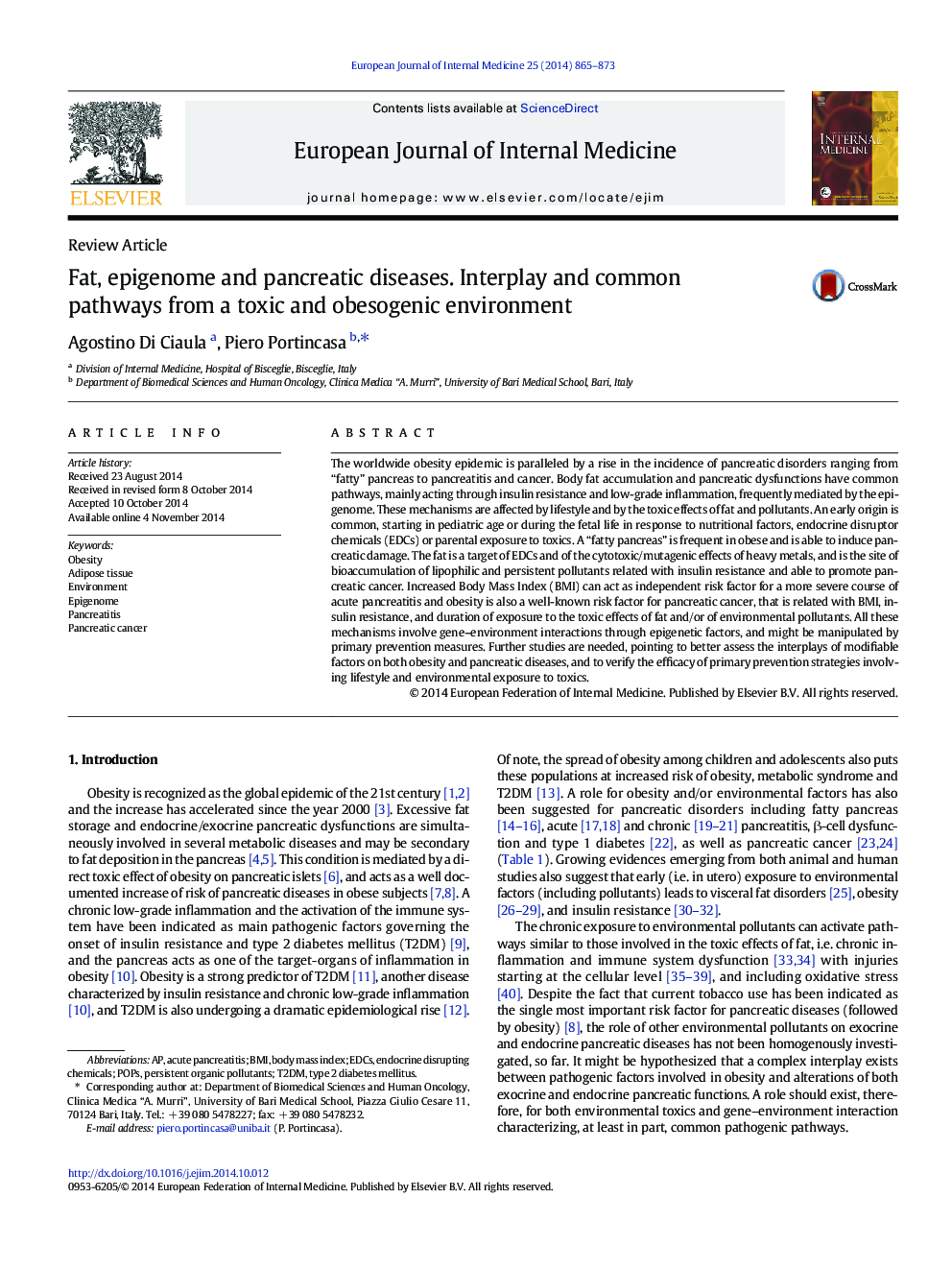| کد مقاله | کد نشریه | سال انتشار | مقاله انگلیسی | نسخه تمام متن |
|---|---|---|---|---|
| 3466392 | 1596550 | 2014 | 9 صفحه PDF | دانلود رایگان |

• Obesity epidemic is paralleled by a rise in fatty pancreas, pancreatitis and cancer.
• These conditions may have common pathways involving gene–environment interaction.
• The toxic effects of fat may interact with toxics of environmental origin.
• Adult obesity may have a very early origin (pediatric age or fetal life).
• Primary prevention may act on lifestyle, environmental exposure and the epigenome.
The worldwide obesity epidemic is paralleled by a rise in the incidence of pancreatic disorders ranging from “fatty” pancreas to pancreatitis and cancer. Body fat accumulation and pancreatic dysfunctions have common pathways, mainly acting through insulin resistance and low-grade inflammation, frequently mediated by the epigenome. These mechanisms are affected by lifestyle and by the toxic effects of fat and pollutants. An early origin is common, starting in pediatric age or during the fetal life in response to nutritional factors, endocrine disruptor chemicals (EDCs) or parental exposure to toxics. A “fatty pancreas” is frequent in obese and is able to induce pancreatic damage. The fat is a target of EDCs and of the cytotoxic/mutagenic effects of heavy metals, and is the site of bioaccumulation of lipophilic and persistent pollutants related with insulin resistance and able to promote pancreatic cancer. Increased Body Mass Index (BMI) can act as independent risk factor for a more severe course of acute pancreatitis and obesity is also a well-known risk factor for pancreatic cancer, that is related with BMI, insulin resistance, and duration of exposure to the toxic effects of fat and/or of environmental pollutants. All these mechanisms involve gene–environment interactions through epigenetic factors, and might be manipulated by primary prevention measures. Further studies are needed, pointing to better assess the interplays of modifiable factors on both obesity and pancreatic diseases, and to verify the efficacy of primary prevention strategies involving lifestyle and environmental exposure to toxics.
Journal: European Journal of Internal Medicine - Volume 25, Issue 10, December 2014, Pages 865–873